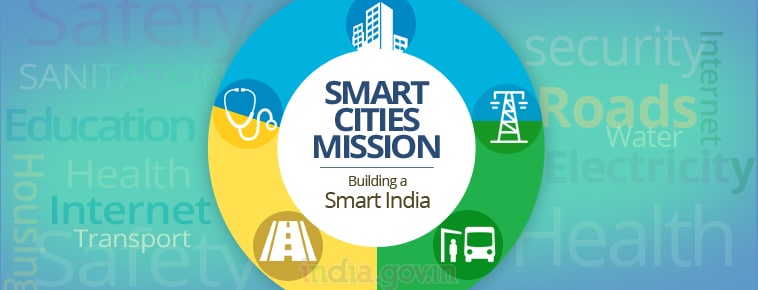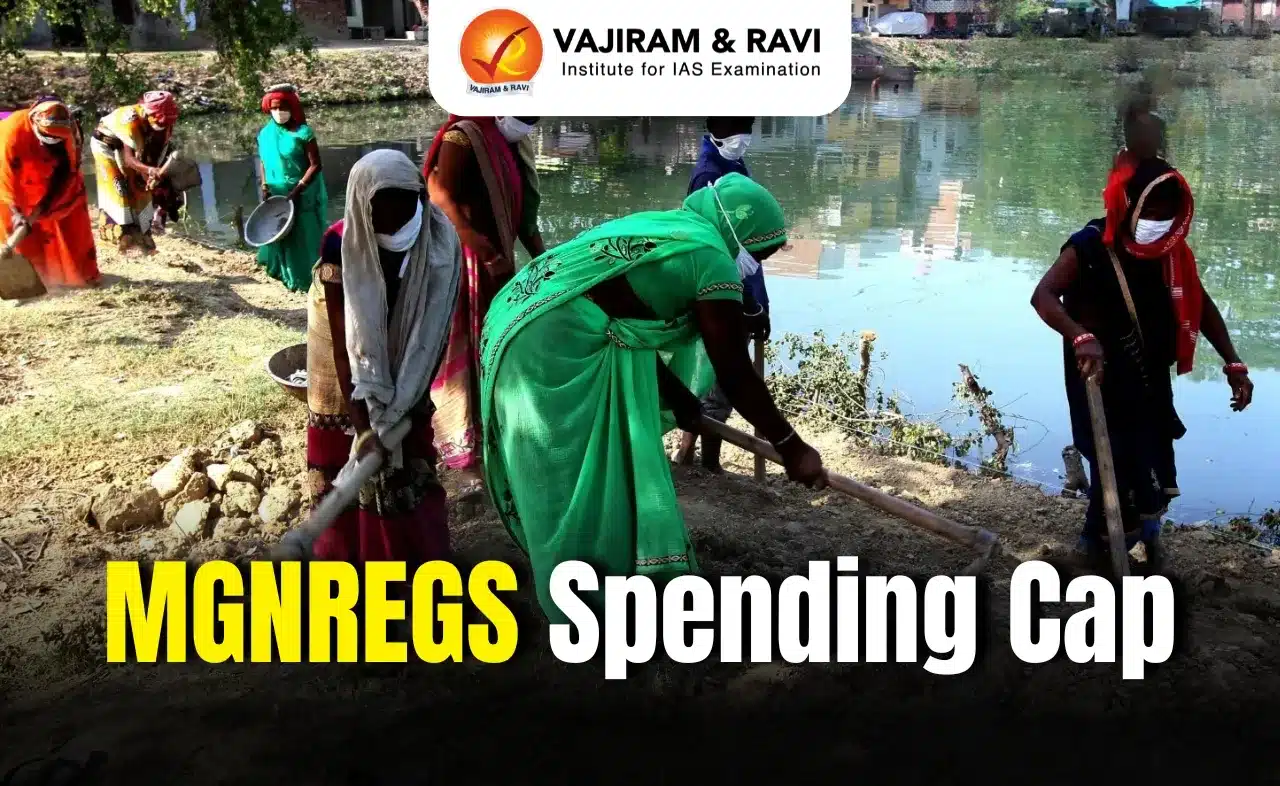What’s in today’s article?
- Why in News?
- What is the Smart Cities Mission (SCM)?
- Objective of SCM
- Achievements of SCM (as of June 2023)
- About the “Labelling Strategy”
Why in News?
- With the Government pushing the deadline of its Smart Cities Mission (to next June), the 100 cities that are part of it are marking their completed projects with logos.
- The cities have been asked to implement the “labelling strategy” – a strategy aimed at displaying the accomplishments so far – by August 31 (2023).
What is the Smart Cities Mission (SCM)?
- It was launched on 25 June, 2015, with the objective to promote cities that provide core infrastructure, clean and sustainable environment.
- 100 cities have been selected to be developed as Smart Cities (through a two-stage competition) in various rounds from 2016 to 2018, with each getting five years from their selection to complete the projects.
- It is a Centrally Sponsored Scheme under the Union Ministry of Housing and Urban Affairs (MoHUA).
- The Central Government will give financial support to the extent of Rs. 48,000 crores over 5 years i.e., on an average Rs.100 crore per city per year.
- An equal amount on a matching basis is to be provided by the State/ULB.
- The six fundamental principles on which the concept of Smart Cities is based are:
Objective of SCM:
- It will ensure a decent quality of life to their citizens through the application of ‘smart solutions’.
- It aims to drive economic growth and improve quality of life through comprehensive work on social, economic, physical and institutional pillars of the city.
- The focus is on sustainable and inclusive development by creation of replicable models which act as lighthouses to other aspiring cities.
Achievements of SCM (as of June 2023):
- According to the MoHUA, 74% of the nearly 8,000 projects for which work orders have been issued, have been completed.
- A total of Rs.73,454 crore had been released to the cities, which have utilised 90% of the amount. The total cost of the projects is estimated to be Rs.1,79,204 crore.
About the “Labelling Strategy”:
- The “labelling strategy” was first rolled out as a pilot in 15 cities and expanded to all 100 cities recently.
- It laid out options for using bespoke logos as well as common imagery such as the Mission logo.
- Stickers, boards, signage and other such material were also designed for installation on completed projects, including smart roads, lights, preserved heritage sites, etc.
- The labelling exercise was “not marketing”, but rather a method for creating awareness and providing information to the stakeholders of the projects. For example,
- In Udaipur, visitors are given additional information through a QR code that leads to a city app developed under the Mission.
- In Agartala, the boards that have been put up have left space for advertisements, for generating revenue.
- Hence, the strategy provides a link to build trust with the community and strengthen the loop between citizen feedback and project implementation.
Q1) What is Atal Mission for Rejuvenation and Urban Transformation (AMRUT) mission?
Jawaharlal Nehru National Urban Renewal Mission was renamed to AMRUT and then relaunched in 2015 with the focus to establish infrastructure that could ensure adequate robust sewage networks and water supply for urban transformation by implementing urban revival projects.
Q2) What is the Rurban mission?
The Ministry of Rural Development launched the Shyama Prasad Mukherji Rurban Mission in 2016. The Mission aims at development of 300 Rurban clusters, that are not stand-alone settlements but part of a cluster of settlements, in relative proximity to each other.
Source: Deadline pushed to 2024, Smart Cities working hard to showcase achievements
Last updated on June, 2025
→ UPSC Notification 2025 was released on 22nd January 2025.
→ UPSC Prelims Result 2025 is out now for the CSE held on 25 May 2025.
→ UPSC Prelims Question Paper 2025 and Unofficial Prelims Answer Key 2025 are available now.
→ UPSC Calendar 2026 is released on 15th May, 2025.
→ The UPSC Vacancy 2025 were released 1129, out of which 979 were for UPSC CSE and remaining 150 are for UPSC IFoS.
→ UPSC Mains 2025 will be conducted on 22nd August 2025.
→ UPSC Prelims 2026 will be conducted on 24th May, 2026 & UPSC Mains 2026 will be conducted on 21st August 2026.
→ The UPSC Selection Process is of 3 stages-Prelims, Mains and Interview.
→ UPSC Result 2024 is released with latest UPSC Marksheet 2024. Check Now!
→ UPSC Toppers List 2024 is released now. Shakti Dubey is UPSC AIR 1 2024 Topper.
→ Also check Best IAS Coaching in Delhi





















